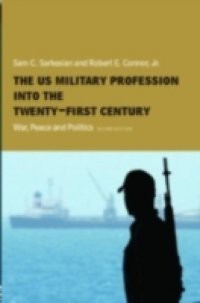This brand new edition of The US Military Profession into the Twenty-First Century re-examines the challenges faced by the military profession in the aftermath of the international terrorist attack on the United States on September 11, 2001. While many of the issues facing the military profession examined in the first edition remain, the 'new war' and international terrorism have compounded the challenges. The US military must respond to the changed domestic and strategic landscapes without diminishing its primary function-a function that now many see that goes beyond success on the battlefield. Not only has this complicated the problem of reconciling the military professional ethos and raison d'etre with civilian control in a democracy, it challenges traditional military professionalism. This book also studies the notion of a US military stretched thin and relying more heavily on the US Federal Reserves and National Guard. These developments make the US military profession increasingly linked to public attitudes and political perspectives. In sum, the challenge faced by the US military profession can be termed a dual dilemma. It must respond effectively to the twenty-first century strategic landscape while undergoing the revolution in military affairs and transformation. At the same time, the military profession must insure that it remains compatible with civilian cultures and the US political-social system without eroding its primary function. This is an invaluable book for all students with an interest in the US Military, and of strategic studies and military history in general.

